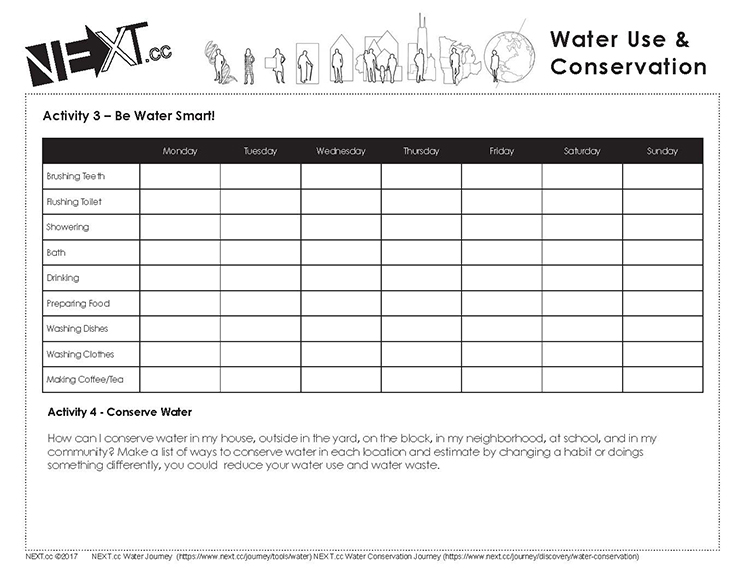
Aquifers are underground water reserves. Water falls to the Earth in different forms of precipitation. When glaciers and ice caps melt, groundwater collects and filters into reservoirs underground. When it rains or snows, liquid water filtrates into the ground in groundwater. Groundwater is one of the most essential freshwater sources for people and life on Earth. Water moves downwards if openings exist in the Earth’s crust or spaces between rocks. Permeable rocks provide a porous, spongelike layer allowing water to move deeper layers. Nature filters and collects water. People throughout the centuries have migrated to sources of clear water. Underground aquifers may take millions of years to fill. Check out this world map of significant world aquifers. For centuries people have dug and drilled wells below ground to reach aquifers. They provide drinking water and water for industrial and agricultural use.
Activity 1 – Unconfined Aquifer

Unconfined Aquifers are malleable underground water collection areas that change boundaries over time. Permeable rock covers unconfined aquifers, which filter surface water depending upon amounts of precipitation and seasons of melting. These underground water collections fill and empty in response to the atmospheric water cycle. Unconfined aquifers can fill up or drain with surface water flow or during drought.
Draw a Section through the earth of an unconfined aquifer and label the layers of vegetation, soil, rocks and water!
Activity 2 – Confined Aquifer

Confined aquifers are underground water collections that have taken centuries to filter water into deep caverns. Pressure from overhead rock and rock below the aquifer contains or confines the water collection. It takes millions of years to fill underground confined aquifers. The largest known confined aquifer in the world is Australia’s Great Artesian Basin. It is approximately one quarter of the continent’s land or seven times the size of the United Kingdom!
Draw the largest aquifers and label them on a world map.
Activity 3 – Well Types
For centuries people have dug and drilled wells below ground to reach aquifers. They provide drinking water and water for industrial and agricultural use. Four common types of wells include dug wells, bored wells, driven point wells, and drilled wells. Dug wells are wide shallow holes dug by hand, usually more than two feet in diameter, with the highest possibility of delivering polluted water. Early builders used wood, stone, or brick. Larger-diameter wells constructed with concrete tiles or galvanized steel provide on-site water sources to rural populations. With boring machines, people searched for water sources underground, boring from 15-50 feet or 100 feet deep; these bored wells are also susceptible to contamination and running dry during periods of drought. Driven point wells use water pressure to push sections of pipe into the ground in places where the aquifer is malleable and the soil porous. Finally, drilled wells include other types of 4- 8 inch wells typically constructed on farms.
Make a sectional drawing of the four types of wells and label them.
Activity 4 – Aquifer Concerns
One-third of the world’s population depends on freshwater from aquifers and one-third of these are rapidly being depleted by human consumption. Currently, the most stressed aquifers are in dry areas and are the Arabian, the Indus Basin(northwestern India and Pakistan), and the Murzik Djado Basin (northern Africa) In addition, in highly developed areas, chemicals applied to the surface of porous and nonporous materials will flow down with the water and may make the collected water toxic. Initially, human and animal waste polluted waterways and spread disease among populations. But as humans began to create other wastes from industrialized agriculture and manufacturing, underground water sources became prone to pollution. From the precipitation of acid rain full of toxic particulate matter to the spraying of pesticides, herbicides, and insecticides on lawns and crops, human introduction of chemicals to nature’s landscapes damages much of the groundwater supply worldwide.
Draw a map that shows the location of the most stressed aquifers in the world.
Activity 5 – Become a Water Advocate

Water is second to air for all of life on Earth. We know that the amount of water on earth is a closed system. What exists is what we have. People always ill migrate to areas where water exists. We need to take care of our water sources. We need to appreciate the water that we have. What can we do to conserve water? What can we do to help protect our sources of water? Take a look at the EPA’s Water Sense for Kids. Research Water Conservation. Start by charting how much water you use weekly. Compare how much you use daily, weekly, and monthly to people on the opposite side of the world. Research and make a list of water equivalencies. Make a list of things that you can do to conserve water, help clean polluted water sources, and collect water. Become aware of your water sources and use
Make a water advocacy poster!
Review
- Aquifers are 'hidden' underground water resources.
- What country has the world's largest aquifer?
- 4 main types of wells are
- What are two main types of aquifers?
- Which aquifer takes millions of years to refill?


















































